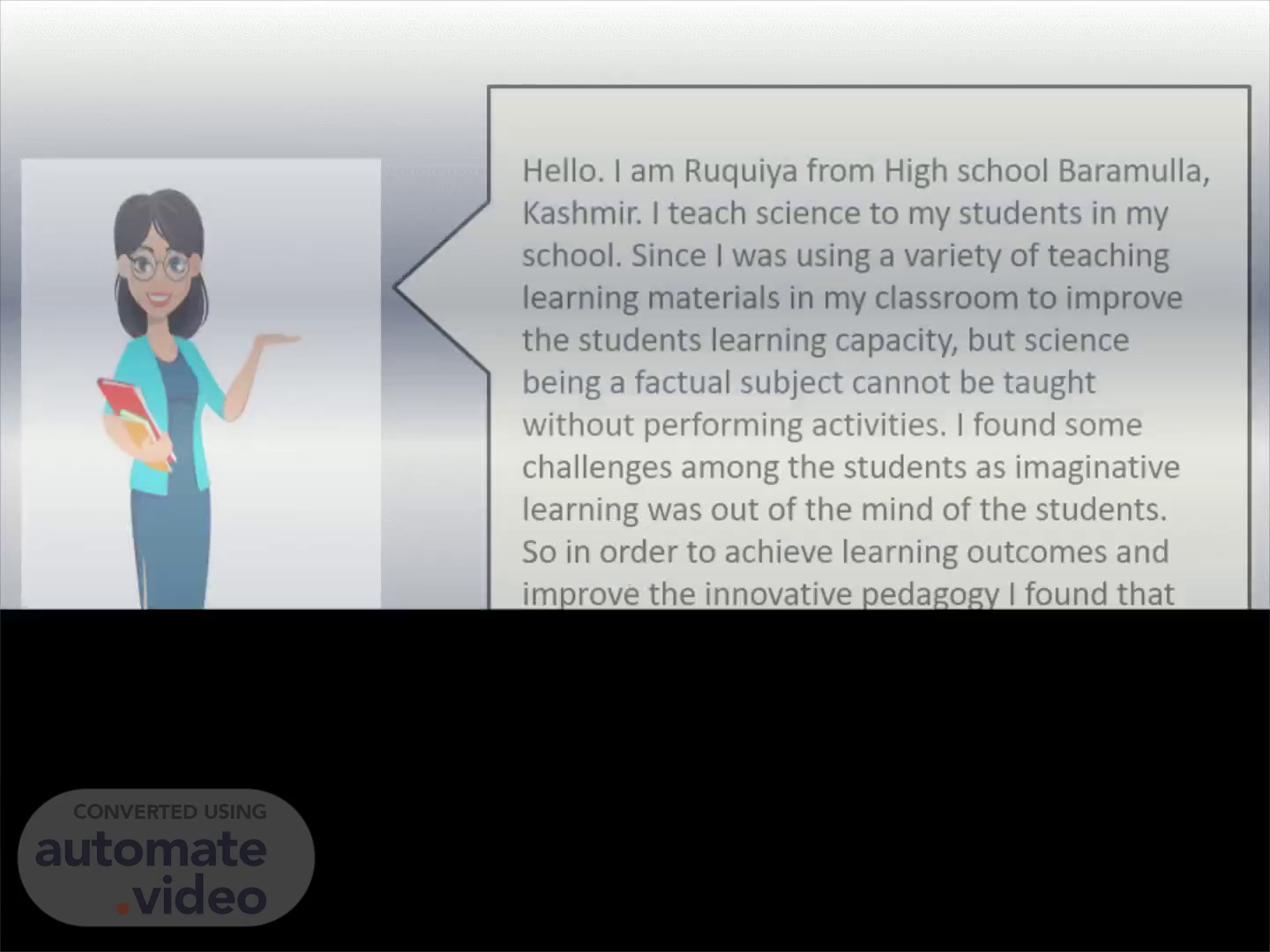Scene 1 (0s)
[Audio] Hello. I am Ruquiya from High school Baramulla, Kashmir. I teach science to my students in my school. Since I was using a variety of teaching learning materials in my classroom to improve the students learning capacity, but science being a factual subject cannot be taught without performing activities. I found some challenges among the students as imaginative learning was out of the mind of the students. So in order to achieve learning outcomes and improve the innovative pedagogy I found that practical teaching is more effective rather than theoretical and imaginative teaching..
Scene 2 (40s)
[Audio] Now in order to reach the developmental goal under NIPUN BHARAT MISSION I am trying my best to clear the concepts of science by performing the activities in the classroom as well as in the laboratory so that the students could learn and understand very well in a practical manner. In order to connect the students' minds towards the topic of the textbook first of all I discussed my project topic that is separation of mixtures from the textbook and made them to understand on a projector available in the school by showing the videos and then how practically we can separate mixtures..
Scene 3 (1m 13s)
[Audio] First of all let them understand what a mixture is. A mixture is a substance that has two or more substances without any measurement and can be separated by simple physical means e.g. 1. Handpicking: - suppose I give them a mixture of dry fruits let the students eat one of the type of fruits. This can be done by hand. So this is the simple example of handpicking..
Scene 4 (1m 44s)
[Audio] Winnowing: - this is another method of separation of mixtures. Winnowing is a process used to separate heavier and lighter components of a mixture by wind or by blowing air e.g. the husk of wheat is lighter than its grain. We can make them to fall from a height so that husk being lighter makes a separate pile and grain being heavier will make a another pile..
Scene 5 (2m 9s)
[Audio] Sieving: - it allows separating tiny particles of one component from bigger particles of another component e.g. we separate the impurities or bigger particle of floor by using a sieve..
Scene 6 (2m 23s)
[Audio] Sedimentation:- process of removal of solid component of a solution from the liquid component by making it to settle down for some time e.g. in case of muddy water we see the mud settles at the bottom while as the clear water forms the upper level.
Scene 7 (2m 40s)
[Audio] Filtration: - let the students understand that filtration is a purification method. It can separate a mixture consisting of a liquid substance and impurities in it e.g. take the mixture of solid in a liquid, the solid component can be separated by using a filter paper or a filter. Finally, we get the pure liquid as incase of drinking water and in pharmaceutical process..
Scene 8 (3m 8s)
[Audio] Evaporation: - it is the process used to separate the dissolved substance from the solvent or to obtain concentrated solutions e.g. common salt is obtained by evaporation process. The thermally unstable substances are obtained by heating it to the boiling point..
